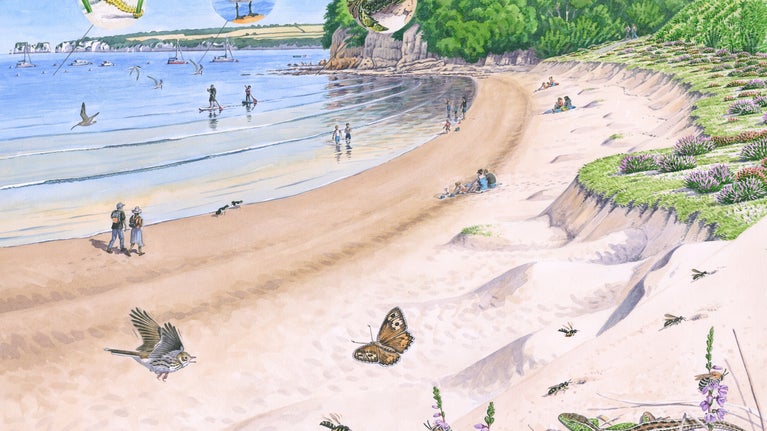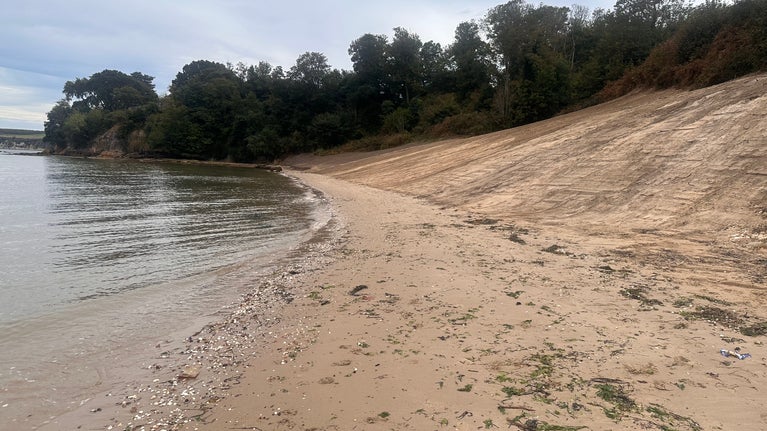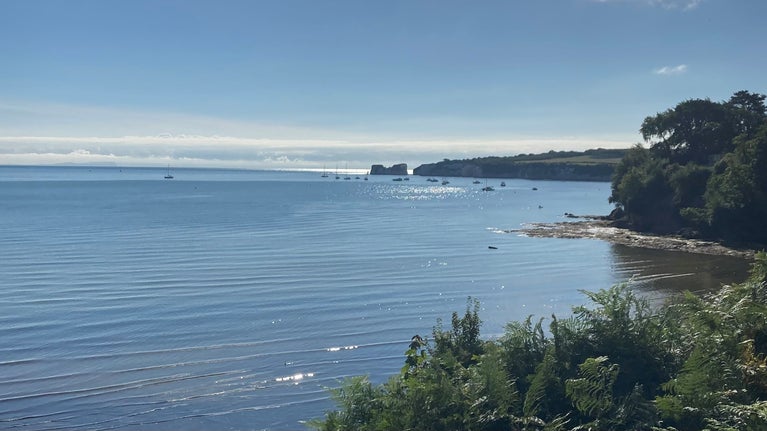Nature begins reshaping Middle Beach
- Published:
- 04 September 2025

The failing coastal defences at Middle Beach, Studland, have been removed and nature is now realigning the coastline.
This crucial work was a direct response to the effects of coastal erosion, accelerated by climate change, which has seen cliffs fall by up to four metres in a single night.
We have gradually been relocating structures from the cliff to the car park, including the café and toilets, as they came under threat of erosion. The long-term vision is to allow the cove to realign naturally, creating a coastline more resilient to future environmental challenges.
Tracey Churcher, General Manager for Purbeck, said:
“Removing the broken and toppling, gabion sea defences – wire baskets filled with stones – was the last stage in a long process. The gabions were no longer effective against the rising tides, and were also collapsing and posing a risk to the public.
“Rather than fighting the inevitable effects of coastal change, we agreed with the local Shoreline Management Plan for Studland which recommended the removal of failing sea defences, leading towards a more natural shoreline.”
Watch this video which shows the cove before and after the removal of the defences, as well as dramatic footage of the diggers at work.

Sarah Coggins, Coast & Marine Adviser, said:
“Holding the cliff in place with a hard structure like gabion baskets meant that the shoreline was not naturally aligned with the coast. When waves hit the gabions, they bounced off causing erosion of the sand in front of the defences. Over time, this caused a 350m section of the beach to be submerged by the tide most of the time making it inaccessible.
“Removing the artificial structures is allowing the beach to replenish itself using sandy material from the cliff. Over time, it’s predicted that this will result in the formation of a sandy cove, with more beach for people to enjoy.
“The effects look extreme at first, but projections show that over the next 20 years or so the cliff will realign to become a gentler slope. This will help make the coastline more resilient to the impacts of climate change, offering more protection to the relocated facilities in the car park."

We believe that removing the sea defences will also enhance the habitat for wildlife. The increased areas of open sand will benefit insects and reptiles such as rare sand lizards, adders and slow worms.
Tracey added:
“It’s a huge relief to have completed the final stage of this process to restore Middle Beach to its natural state and to enable access once more. It’s going to be exciting to see how nature reshapes this coastline over the next few years, creating a beautiful and resilient natural space for the local community and visitors to enjoy for generations to come.”
As the coast realigns, the beach will remain closed for public safety. However, visitors can still access the car park, toilets and popular Sandy Salt Pig Café and Fore Adventure.
